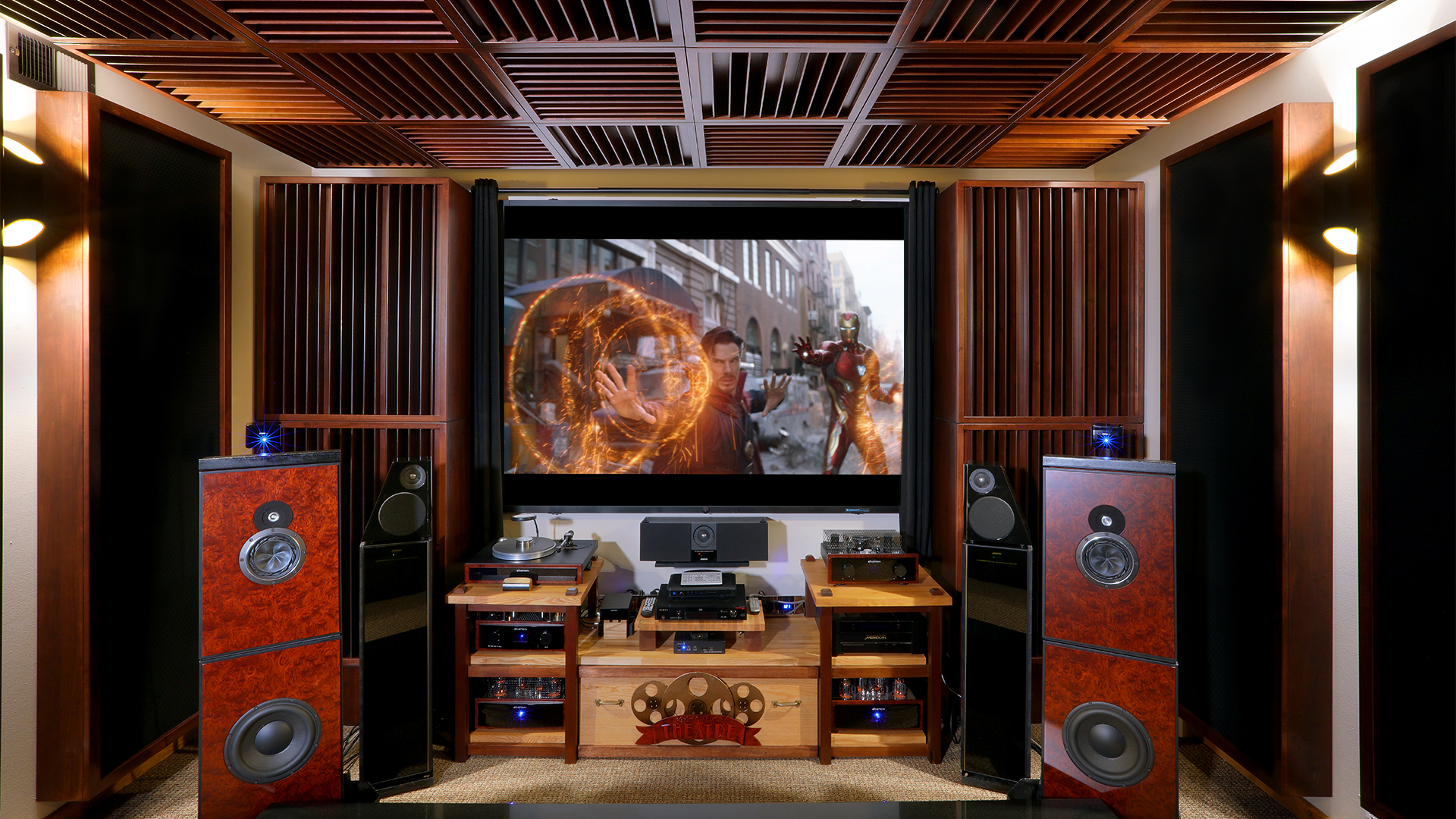Home theater acoustic wall panels come in two main technologies. You can have sound absorbing and sound diffusing home theater acoustic wall panels. Sound absorbing panels can take two basic forms: low frequency and middle and high frequency absorption. These are different technologies and are used to achieve different results solving different acoustical issues. Sound diffusion technology is the second main type and this is also a different technology than absorption and must be used accordingly. Lets examine the two main forms of sound absorption home theater acoustic wall panels.
Home Theater Acoustic Wall Panels
Sound absorbing panels come in two main types. You have low frequency absorbing panels along with middle and high frequency. Low frequency panels come in three main forms: diaphragmatic, membrane, and limp mass. A diaphragmatic absorber is a sealed unit that has a front wall that moves in response to sound pressure energy. The density of the front wall or diaphragm, the cabinet construction density, and the internal cabinet fill material all contribute to the unit’s overall performance.
A membrane absorber is similar to a diaphragmatic but instead of a front wall, it has a much thinner membrane across it. The cabinet and internal fill material are also less dense. A limp mass absorber is simply materials such as building insulation in varying thicknesses. This is the most common form of sound absorbing home theater acoustic wall panels.
Room Size Critical Start
In treating a home theater, you must first choose the correct size room to minimize low frequency buildups and pressure zones. That said, most of you are working with existing room sizes and do not have the luxury of moving walls to correspond to acoustically correct dimensions that will minimize low frequency issues. Low frequency sound absorbing panels then become necessary to absorb excess low frequency sound energy caused by room dimension ratios that will encourage low frequency pressure build up. Choosing the correct type and amount is critical in order to smooth out the frequency response of your room from all of this unwanted pressure build up.
Diaphragmatic Absorption
After you have determined the room size you are using whether a new build or existing room size, you must then decide on the type of low frequency absorber you are going to use. Only diaphragmatic absorption will provide you the necessary rates and levels of low frequency sound absorption. Membrane and limp mass require a lot more space to create similar rates and levels of sound absorption than diaphragmatic absorption.
For example, A diaphragmatic absorber can be designed that can absorb down to 40 Hz. using only 10″ of space. A limp mass absorber would take 7′, a membrane absorber around 4′. With low frequency effect channels in your home theater rooms, sometimes using multiple sub woofers, only diaphragmatic absorption will provide the horsepower necessary to achieve the correct attack and decay rates in your home theater room.
This video explains more about this process:
And you can see our own series of ACDA 12 Diaphragmatic Absorber here. They are the most powerful free standing units on the market today and absorb all the way down to 30 Hz.
Middle And High Frequency Absorption
Middle and high frequency sound absorbing panels are the next category of home theater acoustic wall panels. These panels are designed to minimize the impact reflections have from our room boundary surfaces. Reflections from our side, front, and rear walls intermix with the direct sound from our left, right, and our center channel. These three “front” channels must achieve a balance at the listening position. This balance must be a blend of the direct sound from each of the three speakers and the room reflections mainly from the side walls. Sound absorbing home theater acoustic wall panels can accomplish this acoustic goal.
The following picture shows the Acoustic Fields Absorbing Panels which are available here.
Sound Diffusion
Sound diffusion will help you take all of this managed middle and high frequency energy and then spread it out in a fan like array across your room. Quadratic diffusion is the only diffusion technology that is predictable and consistent in its performance. You can achieve two dimensions of sound diffusion simply by positioning the quadratic diffuser in a vertical or horizontal position within your room. A vertically positioned quadratic diffuser will diffuse energy into a horizontal array and a horizontally positioned diffuser will spread sound out in a vertical fan like array. Diffusion has the acoustical benefit of making the room sound larger than its physical dimensions.
You can see our QDA 19 Quadratic Diffuser series here.









